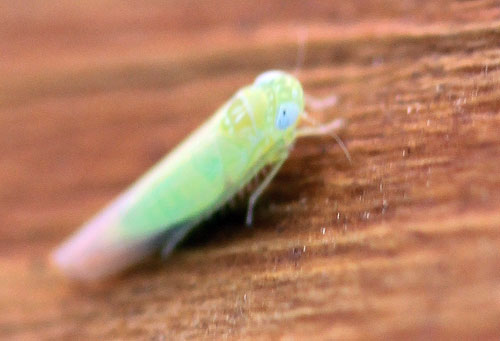Scouting for potato leafhoppers in alfalfa
Know your options for insect control prior to a problem.
Reports of potato leafhoppers in alfalfa are a sure sign that summer weather is here. The potato leafhopper is a pesky insect that makes its way north every summer by hitching a ride in late May or early June on weather fronts that begin in the Gulf States. Generally, dryer weather conditions will enhance damage as a result of the feeding on plants.
The potato leafhopper adults are small, bright green, torpedo-shaped insects that can fly. Females lay eggs inside alfalfa stems with nymphs hatching in seven to 10 days and reach adult stage in two to three weeks. There are several overlapping generations per summer. The nymphs will actively feed immediately after hatching. Both the adults and nymphs are active feeders. They will inject toxic saliva into the plant and suck plant sap juices, resulting in a V-shaped wedge at the edge of the leaflet. The yellowing hopper burn as a result of the feeding may look like drought conditions or a nutrient deficiency.

Adult potato leafhopper (about 0.25 inches long).
When scouting fields, consider the options for managing this insect pest that include biological (fungal pathogens), cultural (timely cutting) and chemical (insecticides) controls. Many alfalfa varieties are available that have potato leafhopper resistance. For a list of available resistant varieties, go to the MSU Forage Varieties for Michigan in 2011. Thresholds for control vary with the size of the alfalfa regrowth. Second and third cutting alfalfa are normally the cuttings of most concern.
MSU recommendations for potato leafhopper thresholds
The recommendations vary with plant height in inches:
- Under 3 inches = 20 adult potato leafhopper s per 100 sweeps
- 3 to 8 inches = 50 adult potato leafhoppers per 100 sweeps
- 8 to 12 inches = 100 adults or nymphs per 100 sweeps
- Over 12 inches = 200 adults or nymphs per 100 sweeps
Scouting should start in early June through August. Insecticide residues can vary in length of time and are usually between three and 14 days. If a chemical control is used as an option for control, always follow label recommendations and consider pre-harvest intervals (PHI).
Additional information:
- MSU Extension’s Drought Resources



 Print
Print Email
Email




